Some weeks ago, we ran an episode about the Vatican City State in our sister channel, Geographics. In that video, I mentioned one of the tiny state’s most peculiar residents, and many of you asked me to expand on his life here at Biographics. I am talking about Father Gabriele Amorth, the most experienced and prolific exorcist in force at the Vatican. Between the start of his career in 1986, until shortly before his death in 2016, Father Amorth claimed to have exorcised 300 subjects per year.
Let’s get into it then! How did Gabriele Amorth become a priest, and more importantly, an exorcist?
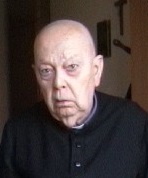
Fighter, Student, Priest.
Gabriele Amorth was born on May 1, 1925 in Modena, Northern Italy, now famous for being the home of Ferrari.
Modena also had a high concentration of alleged witches and wizards, especially from the 15th through the 18th Centuries. Some of them were just experts in herbal remedies, but they still had to face the local Inquisition, active from the 13th to the 18th Century.
One of these occult individuals deserves a special mention: Father Guglielmo Campana. A renowned local priest, Campana was an exorcist, but also a womanizer, a sorcerer, and a necromancer. He was duly tried by the Inquisition in 1517.
We don’t know if young Gabriele was aware of these stories. What we do know is that he grew up in a household that was both religious and involved in politics: his father was an early supporter of the People’s Party, a faction inspired by Catholic ideals and the precursor to the eventual Christian Democrat Party.
In 1943, Gabriele turned 18 and was drafted into the Fascist army, but he went AWOL and joined a resistance unit headed by a Catholic activist. For the following two years, Amorth fought against Fascist loyalists and German occupation forces, rising to the rank of Battalion Commander within the resistance. That’s equivalent to an Army Major. All at the age of 20!
It’s reassuring to know that your local demon hunter was also handy with a Carcano rifle and a STEN sub-machine gun!
Amorth reported being arrested and sentenced to death more than once, but he always managed to escape. After the end of the war, Amorth was awarded the War Cross for Military Valour.
After returning to civilian life, Gabriele moved to Rome to study law. He also became active in politics: in 1947, he joined the recently founded Christian Democrats as vice secretary of the Party’s youth organization. The secretary in charge was one Giulio Andreotti, a controversial figure who later became a Cabinet Minister and eventually Prime Minister.
But Gabriele didn’t pursue politics. Since the age of 17, Amorth had considered joining the Church and so, after earning his law degree, he enrolled in a seminary to become a man of the cloth. In 1954, Gabriele attained a second degree in theology and was ordained as a Catholic priest.
Black Dog
During his first years in priesthood, Father Amorth did not practice exorcisms, nor was he probably even aware of these rituals. At that time, the number of exorcist priests in Italy could be counted on two hands.
However, Amorth did dedicate himself to some of the most miraculous, supernatural, and even controversial aspects of the faith. A long devotee of the Virgin Mary, Amorth studied the Marian apparitions and miracles at Medjugorje, in modern-day Bosnia. He firmly believed these to be true-life events, a point of fact not endorsed or agreed upon by all the clergy members.
In 1959, he visited another site famous for miracles attributed to the Mother of Jesus: Fatima, in Portugal. In a spectacular enterprise, Father Amorth organized a ‘pilgrimage in reverse’ — he arranged for a statue of the Virgin to travel from Fatima to all of Italy’s main cities. His old pal Andreotti, now Minister of Defence, assisted by loaning Amorth some military transport helicopters!
During this tour Father Amorth took the statue to the Convent of Padre Pio, or Father Pius, now a Saint.
This mystic friar is widely believed to have performed miracles during his lifetime and after his death. He was also beset with stigmata: unexplained bleeding marks which appear on the ribs, wrists, hands or feet, matching the wounds that Jesus Christs received on the cross.
It was Father Pio who first introduced Father Amorth to the mysteries of the Devil and its presence among humans. Often the Prince of Darkness would torment Pio, disguised as a huge, snarling black dog. While the friar prayed alone in his convent cell, the hell hound would attack him, forcing him into vicious, all-night-long fights. Father Pio died in 1968 and was canonized as a Saint in June 2002.
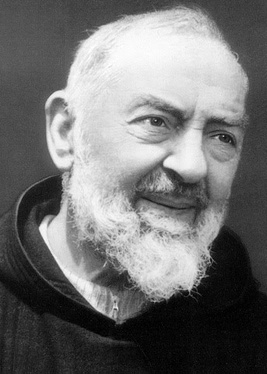
During the ensuing years, Father Amorth did not have direct contact with any demons. The closest he got was was his acquaintance with Father Candido Amantini, who for much of the 1960s, ‘70s and ‘80s, was the only sanctioned exorcist in Rome.
But things were about to change. In 1986, Father Amorth was 61 — an age close to retirement for most people! And yet, his true career was just about to start.
On June 6, 1986, Father Amorth was summoned for a meeting with Cardinal Poletti, the highest-ranking clergyman in Rome, besides the Pope. During a casual conversation, Poletti asked if Amorth knew Father Amantini, the exorcist. As Amorth answered that yes, he had met him previously, he noticed that Poletti was scribbling on a piece of paper. At the end of the conversation, the Cardinal handed him a note — it was an official appointment as assistant to Amantini.
Just like that, Amorth had become assistant exorcist for Rome, which essentially made him the deputy-chief exorcist of the Vatican. He understood immediately that he was going to become more than an assistant — he would soon become Amantini’s successor, as the current chief exorcist was in poor health.
Amantini held on for another six years, dying in September 1992. From 1986 to 1992, Amorth learned from his mentor all the tricks of that terrifying trade that is the casting away of demons.
I will now ask you to step into Gabriele’s shoes, as I take the role of Amantini and take you through a quick apprenticeship on how to become a Demon Slayer.
First lesson: what is possession?
By Demons Be Driven
According to the official Catholic Catechism, demonic possession is the act by which the Devil, a demon, or a spirit takes over a victim’s physical activity, as well as their mental and spiritual energies. By exerting physical violence upon the hosts, which manifests for the victim as illness or pain, the demons can coerce humans into committing unholy sins.
What exactly is the ultimate goal of these malignant entities? In most cases, it’s just to spread chaos for the sheer pleasure of it.
The possession cases that Amantini and Amorth involved themselves in mainly belonged to a category defined as ‘peripheral pathogenic’ by modern anthropology.
Anthropologist I.M. Lewis makes a distinction between central and peripheral types of possession.
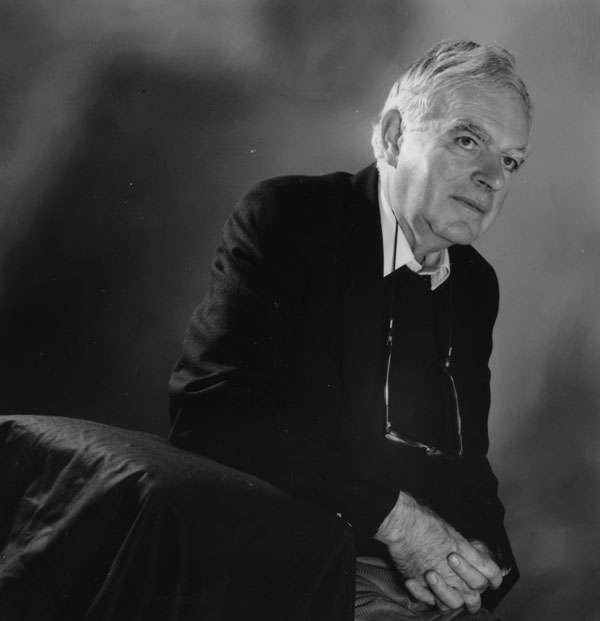
In the case of Central Possession, a member of the religious elite becomes possessed by spirits during an official ceremony in which he or she fulfills a political, religious, or moral function.
Peripheral possession, on the other hand, indicates an invasion of evil spirits: unwanted, immoral, dangerous.
Anthropologist Emma Cohen further subclassifies peripheral possession into ‘executive’ and ‘pathogenic’.
[Editing note: The Peripheral box splits into the two subgroups, Executive and Pathogenic]
Executive possessions involve the complete replacement or transformation of the host’s personality with that of the invading entity.
In pathogenic cases, the spirit or demon will cause abnormal and deviant behaviour, illness, pain or misfortune to the victims, while their identity is largely intact. It’s the alternating of normal and abnormal behaviour that leads the victims’ social circle to seek help.
The world’s largest religions all have their interpretations of what entities may cause these peripheral pathogenic possessions.
According to the Talmud, a sacred book of Jewish tradition, possession is called Dybbuk: this is when the soul of a dead person is ‘grafted’ onto a living person’s soul. This may happen out of revenge, sheer malice, or total randomness.
In Islam, those who are greedy for earthly pleasures, have low self-esteem, or struggle for acceptance may be possessed by a Jinn. According to the Quran, these are entities made of smokeless, scorching fire and are not necessarily malevolent.
In Hindu lore, unwelcome possessions manifest as physical or mental illnesses, mainly affecting women and children. These are caused by a number of evil forces, such as bhutas, or ghosts, curails, blood-sucking witches, pisacas, flesh-eating demons, and many more.
Going back to Catholicism, the Catechism identifies possessing entities a either the Devil himself or, much more commonly, his demons. These are fallen angels, which means that their strength, intellect, knowledge, and cunning are superior to that of humans. Nonetheless, they are still God’s creatures and are ultimately subject to His will.
That is why an ordained member of the Church can perform exorcisms. These are simply defined as acts or rites by which priests use their authority to demand that a person – or even an object – is rid of the influence of Evil.
Father Amantini introduced his pupil Gabriele to the strictly codified procedures to conduct an exorcism, as defined by Ecclesiastical Law and the Roman Ritual. This is the official collection of sacred rites and prayers to be used during the Sacraments.
But before you can start to exorcise a patient, how can you be sure that a demon is lurking within?
Scorpions and Serpents
Amorth learned how to approach every potential case of possession with a process called nment.
First, patients must present with clear symptoms. Besides irrational changes in one’s behavior, including performing acts of violence and self-harm, there are some physical symptoms: the white of the eyes may appear red, as in a case of conjunctivitis. The pupil will be excessively and constantly dilated. The patient’s face will appear longer and darker than normal.
So far, all of these symptoms are compatible with known physical and psychiatric ailments. But others stand out much more clearly. Some patients would display immense, inexplicable physical strength. Their voice may become unnaturally hoarse and deep. They will speak, or understand, languages previously unknown to them, such as Latin, Ancient Greek, or Aramaic. They will react violently to the presence of sacred objects or the mention of religious figures. In extreme cases, just thinking about Jesus or Mary may throw patients into a fit of rage.
If patients carried these symptoms,
Amorth and Amantini would organize a prayer service with them, also known as a ‘diagnostic exorcism’.
If patients were to react adversely, suggesting an actual possession, the exorcists would refer them to a medical team for further evaluation.
This is a very important step, as Father Amorth – and all exorcists in general – recognized the importance of proper psychiatric evaluation. If no medical explanation or remedy were found for the victim’s suffering, the priest would then decide whether to proceed with the exorcism and seek permission from his local Bishop.
By shadowing Amantini, Father Amorth perfected his exorcism rites. According to the Roman Ritual, these must be conducted by a priest, in Latin or another Vatican-approved language, while standing on sacred ground.
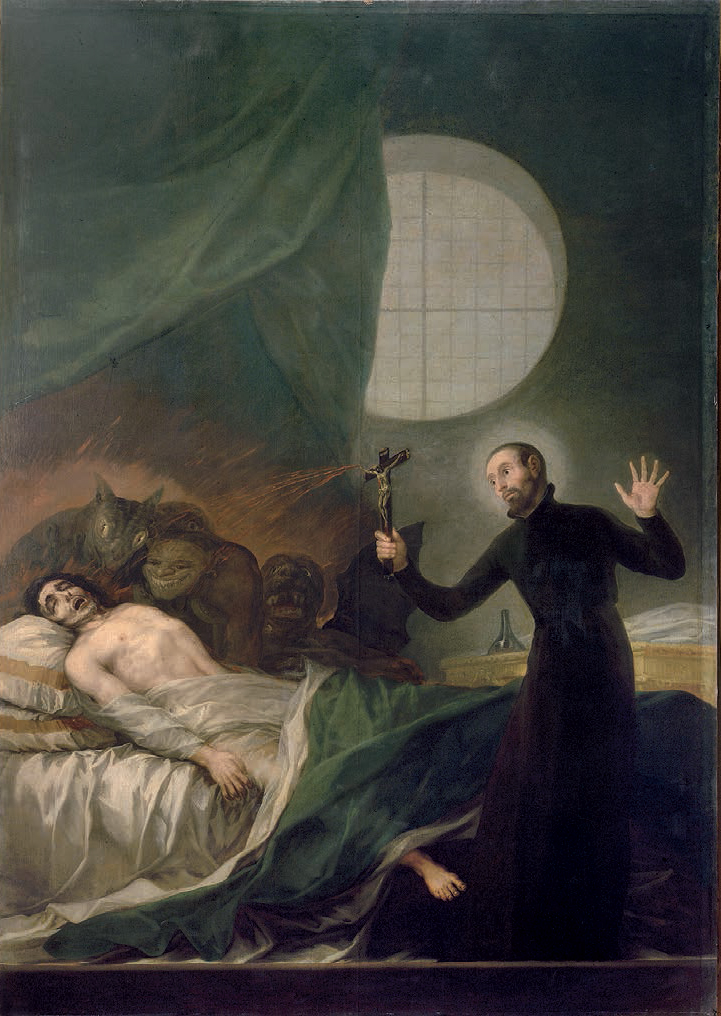
The Roman Ritual is rigidly codified: priests are meant to follow a pre-ordained sequence of prayers, psalms, and exhortations intended to expel demons from the hosts’ body. Amorth largely followed the Ritual during his apprenticeship, but he eventually introduced some personal touches.
For example, he always wore a purple stole, which he ensured was wrapped around both his and his patients’ shoulders. He always made sure he was carrying Holy Water and a bearing a medal of Saint Benedict of Nursia. This Saint is mostly known for his lasting influence on monastic life and education, but he is also famous for defeating Satan on at least three occasions.
Over time, Amorth realized that more than 90 percent of his cases that made it to Step 5 turned out not to be real possessions. That is why he developed a further screening method, which worked only once an exorcism was underway.
Amorth claimed that during the ritual, many patients would close their eyes during specific prayers. In turn, Amorth would have their eyelids forced open. In the case of real possessions, the eyes appeared completely white.
In an interview with British broadcaster Giles Brandreth, Amorth specified that if the pupils are completely rolled upwards,
“ … then the demons in possession are scorpions. If looking down, they are serpents”
Amorth did not elaborate on this distinction. But serpents, or snakes, are a common incarnation of Satan or his demons in Christian art and literature. Scorpion demons are more interesting, though, as they belong to the Mesopotamian mythology that pre-dates any description of Judeo-Christian demons. It was a Mesopotamian demon, Pazuzu, that appeared as the main antagonist in The Exorcist.
After a period in which Father Amorth closely shadowed his mentor, he finally had the chance to perform his first exorcism as the lead. This case related to a 14-year-old girl, who after attending a Satanic ritual in central Rome, immediately presented with symptoms of possession.
Her parents took her immediately to Amantini, but unfortunately, the lead exorcist was ill. Amorth stepped forward. In a rare instance of disobedience, he disregarded the discernment process and immediately started the ritual. In later interviews, he claimed that the girl was healed after one single session. He explained this by citing the immediacy of the exorcism, which had prevented the demon or spirit from
“Taking root, or burrowing, inside the victim.”
This was an exception: in most cases, patients were taken to Amantini and Amorth only after months of suffering from possession symptoms. According to Amorth’s new theory, this enabled invading spirits to settle inside the hosts. This demonic fortification required exorcisms to continue for multiple sittings, at least an hour-long, over the span of months or even years, until a patient was eventually liberated.
Is liberation a given? Father Amorth became increasingly confident about his odds of victory with each passing exorcism. The teaching of Amantini was that, regardless of their power, demons will ultimately succumb to the power of Christ, if properly channeled through an exorcist.
Father Amorth once told a journalist that
“The Devil may win some battles. Even important ones.
But remember:
He will never win the war”
A Duel with Satan
Father Amorth indeed waged a constant war against the legions of Hell. Since his appointment in 1986, until his death in 2016, the chief exorcist dealt with more than 300 cases of possession every year. That’s a rough total of 10,000 alleged possessions, requiring him to perform about 70,000 exorcism sessions.
However, Father Amorth always admitted that the actual cases of demonic possession were in the hundreds, not the thousands. In most cases, exorcism didn’t work; patients were referred back to psychiatric care and eventually cured by other means.
In actual cases of possession, Father Amorth estimated that 90 percent of them were due to the patient’s exposure to a spell, a curse, or a satanic ritual. Amorth acknowledges that most self-described witches, wizards, clairvoyants, or Satanist priests are harmless occult enthusiasts at best or mundane scammers at worst. However, he believes that a small minority of them have actual dark powers.
What are the effects of confirmed possession on its victims?
Let’s take the example of one of Amorth’s youngest patients, a boy of 11. Halfway through the ritual, the boy – or the demon within – flew into such a fit of rage that he had to be restrained by seven grown men, and even then, the boy managed to send them flying through the room.
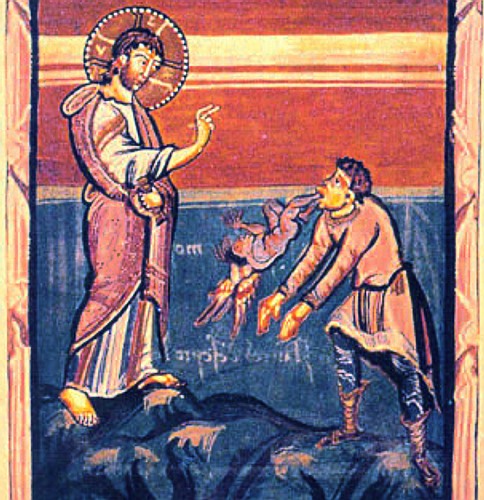
Violent manifestations and attacks are not uncommon, which is why exorcists often deploy physical restraints. On one occasion, a patient succeeded in attacking Amorth directly, delivering a kick so strong that it broke his leg. The priest had to wear a cast for a month.
Most attacks directed at the priest take a different form: spitting. This is a manifestation of the scorn and spite felt by demons against the exorcist and his prayers. In some cases, the projectile was more than just saliva. In one particularly tough ritual, Amorth went to cover the patient’s mouth while she was foaming and spitting. When he retracted his hand, he found it filled with metal nails.
This was not surprising to Amorth: spitting or simply producing metallic items in the patient’s mouth is a common trick used by devils to hurt and scare their victims. He recalled patients slowly ejecting from their mouth large metal spikes, shards of glass, or even a radio, which came out one piece at the time.
During his career, Father Amorth has frequently spoken about the film The Exorcist. While praising it for raising awareness about the practice of exorcism, he pointed out that the ritual used was not the correct one, and most of all that the symptoms displayed by victim Regan were exaggerated.
So, can the head spin by 180 degrees? Absolutely no!
What of people bending backwards in a bridge position and walking like spiders? Well, victims can contort in unnatural ways, angles and shapes, but they are unlikely to crawl like arachnids.
How about green projectile vomiting? Vomiting does happen, but never with such force.
And can patients levitate? Well, actually Amorth confirmed that this does happen, although he only experienced it twice in thirty years. On another occasion, he witnessed something even more chilling: a possessed old lady was able to walk on walls like a reptile.
Lastly: do patients’ voices sound ‘double’, as though there is more than one entity within?
That could be the most interesting one of all.
Amorth always maintained that Satan, or his demons, do not like to talk. This is because they hate being detected. However, when they are discovered, they may engage in short dialogue with the exorcist, usually limited to verbal abuse or curt answers to the priest’s questions.
The entities may not reveal their name when questioned; if they do, they often claim to be Satan, or Beelzebub. What they will easily reveal is how many of them are within the host. Sometimes three, five, seven, perhaps even a legion of demons. Even then, though, ‘double’ or ‘multiple’ sounding voices are extremely rare, but not impossible…
For a full account of the battles of Father Amorth, I can only advise that you look up one of the several books he published on his experiences, including “An Exorcist Tells His Story”, “My Battle Against Satan” or “Memoirs of an Exorcist”.
Now, it is fair to wonder if the Exorcist-in-Chief at the Vatican has ever felt fear during his daily occult struggles. Even if one does not believe in demons, we are still talking about confronting patients who are deeply disturbed and potentially dangerous, for several times a day.
Journalists have asked him many times: are you scared of Satan? His reply:
“Absolutely not.
It is him,
who is afraid of me.”
The Press and Father Amorth
Father Gabriele Amorth has always had an open and positive relationship with the press, an important channel to raise awareness on exorcism. He believed that, prior to the three most recent Popes, Vatican leadership has not done enough to support exorcism in the public consciousness. It is perceived as an ancient and outdated practice of the Church, rather than a noble, very real fight against the Devil.
Amorth has never been shy about his critical view of top Church officials. He has accused them of trying to replace the Roman Ritual of exorcisms with less powerful variations, and of trying to ban ‘diagnostic exorcisms’, a key step in the discernment process.
In 2012, Father Amorth successfully prevented both changes from taking effect. Two years later, he scored another victory — receiving an official acknowledgment from the Vatican for the International Association of Exorcists, which he had co-founded in 1990.
These conflicts with the Vatican have been exacerbated by a series of interviews in the 2000s in which Father Amorth stated that the Holy See had been infiltrated by demons, and that the series of church sex scandals could be attributed to satanic influence or downright possession. Amorth had partially toned down these claims before his death, stating that Cardinals and other leaders were not immune from temptations brought forward by Satan, who was more active than ever in his fight against Catholicism.
It must be said that Amorth did not pull any punches when it came to accusing pretty much everything and everyone of being an ally of Evil. He went as far as calling yoga as a ‘satanic’ practice, as – according to him – it is linked to eastern religions, which are sometimes centered around the belief of reincarnation. Perhaps his best-known target is the Harry Potter franchise. In his view, the Wizarding World described by J.K. Rowling encourages children to believe in black magic and to distance themselves from Christian prayer.
However, instead of denting his popularity, these controversies have contributed to Father Amorth becoming the most famous living Catholic exorcist. And so, it was only a matter of time before he came face-to-face with the man behind the most famous fictional exorcist.
Last Exorcism: Session 9
In 2016, filmmaker William Friedkin, director of The Exorcist, interviewed Father Amorth for Vanity Fair. Friedkin took the occasion to ask permission to join the priest in one of his exorcism sessions. His footage of the exorcism of a young woman called Cristina formed the backbone of Friedkin’s latest release, the documentary “The Devil and Father Amorth”.
When Friedkin met Amorth, he had been exorcising Cristina for nine months. It all began with another patient, a woman in her thirties whose name has never been revealed. After a long depression, she was found one day by her brother, Paolo, writhing on the floor, her twisting body shaken by convulsions. According to witnesses, she would be found howling like a wolf and crawling on walls like a snake.
This state continued for several days, and a psychiatrist was not able to help. Amorth took charge, and the patient was healed after four sessions. Following the experience, Paolo became one of Father Amorth’s most trusted assistants.
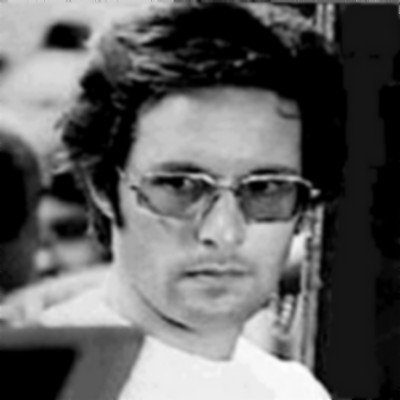
And it was Paolo who, years later, met Cristina at Mass, and he noticed how she looked distressed, disoriented, and disturbed. Paolo brought her case to Amorth’s attention.
According to Amorth, Cristina’s brother and his girlfriend were members of a satanic cult, and they may have caused Cristina’s plight after performing an occult ritual. Whatever the cause, it was clear to him that Cristina needed his help. After following the discernment procedure, the priest started to exorcise her in August of 2015.
Friedkin was allowed to film the ninth exorcism session in early 2016.
Clips of the exorcism session are available on Youtube, and you will find the links below. For the most part, I will leave it to you to take your own conclusion; I will comment only on a couple of things.
First, it’s remarkable just how calm and unfazed Father Amorth appears. In one clip he thumbs his nose at the demon inside Cristina. And, although the subtitles miss this, my Italian researcher assures me that he tells the entity to
“Shut up! You ain’t worth a cigarette butt!”
You may also notice Cristina’s behavior. She appears to be in a trance-like state, but she is alert and reactive to Amorth’s ritual. Very reactive. As she thrashes about on her chair, or sometimes attempts to attack the priest himself, she is barely held down by two well-built men. Then, as Amorth orders the demon to leave Cristina’s body, in Latin, the patient replies in Italian:
“NEVER!”
According to Friedkin, Cristina had never studied Latin at school.
Finally, when Amorth asks how many demons are there, Cristina’s voice turns different. She has been growling and snarling all through the clip, but at this point, her voice sounds … ‘double’…as if many voices speak from within. She first answers
“Eighty. Eighty Leaders!”
And later
“We are Armies! Armies! Armies!”
Then, Amorth concludes the ritual with the Sign of the Cross.
Amorth later confided to Friedkin that this case was particularly unsettling. During a previous session, Cristina’s entity had recited back to Father Amorth all his past sins. This was something that only the exorcist and his father confessor could know.
Amorth and Cristina were due to meet again to conclude the exorcism, but her family kept postponing appointments. Friedkin saw Cristina and her relatives again in August but was threatened with legal action if he divulged his footage. Their concern was that making it public would spread Satan’s work. As Friedkin brushed off the threats, Cristina’s family cut ties with both the filmmaker and Amorth.
Unfortunately, the chief exorcist would not have been able to complete his work with Cristina, even if he was able to. Already in poor health throughout the summer, Father Amorth contracted pneumonia and was hospitalized at the beginning of September.
At the age of 91, Father Gabriele Amorth died from complications of pneumonia on September 16, 2016. According to his assistant, he remained alert and jovial to the last moment, often removing his oxygen mask to blow raspberries at visiting friends, whenever they started crying.
Is any of this real?
So far, I have presented possession and exorcism from the point of view of Gabriele Amorth. Do I believe that demons and spirits can invade and control an individual? I am not going to answer that. Sorry!
What I will choose to highlight is the perspective of medicine and psychiatry on demonic possession. For decades, since the beginning of modern psychiatry and psychoanalysis, the official stance was that almost all possessions could be explained as extreme cases of psychosis and schizophrenia.
In recent years, the diagnosis has changed, and the DSM 5 – the official ‘handbook’ of American Psychiatry – identifies demonic possession as a form of Dissociative Identity Disorder.
These are perfectly viable explanations; however, some psychiatrists admit that mental illness cannot explain all observed phenomena, and that exorcism rites can be considered as a legitimate therapy. For example, The British Journal of Psychiatry published an article on the use of antipsychotic clopenthixol to treat
“Exorcism-resistant Ghost Possession”.
Which acknowledges that exorcism may be a cure.
More recently, in an interview with the Telegraph, Psychiatry Professor Richard Gallagher, of New York Medical College and Columbia University, stated that demonic possessions are real and that patients seeking exorcism should be taken seriously.
While I could go on forever with arguments and counter-arguments, I will leave it to you, in the comments: is possession a psychiatric illness, or can evil spirits haunt a human soul?
SOURCES/FURTHER READING:
Father Amorth exorcises Cristina
William Friedkin speaks about Father Amorth:
https://www.vanityfair.com/hollywood/2016/10/father-amorth-the-vatican-exorcist
Interviews, Biographies, Obituaries of Father Amorth (some in Italian)
https://youtu.be/Ow6gvYF-BfM
http://www.corriere.it/cronache/16_settembre_16/morto-padre-amorth-l-esorcista-antonomasia-c98fbf40-7c42-11e6-a2aa-53284309e943.shtml
http://www.rainews.it/dl/rainews/articoli/padre-gabriele-amorth-morto-dc8ff35d-9d95-4c58-9328-7bacdd419942.html
https://medjugorje.altervista.org/index.php/archivio/articolo/don-gabriele-amorth/395/don-gabriele-Amorth-domande-degli-psichiatri
http://vittoriozincone.it/2010/06/17/gabriele-amorth-sette-giugno-2010/
http://www.ilgiornale.it/news/mia-lotta-contro-satana-lui-che-deve-aver-paura.html
https://m.famigliacristiana.it/articolo/padre-amorth-in-prima-linea-contro-il-demonio-.htm
https://www.ilfattoquotidiano.it/2013/01/27/lindebolimento-degli-esorcisti-nella-chiesa/481433/
Early exorcists in Modena
https://www.persee.fr/doc/mefr_1123-9891_2003_num_115_1_9998
https://www.olschki.it/libro/9788822248251
The symptoms of demonic possession
Possession according to the Catholic Church
Possession in Islam: the Jinns
Possession in Hinduism
https://pure.au.dk/ws/files/75335436/Hinduism_editsfinal_possesion_april_2014.docx
Dybbuk:
https://www.myjewishlearning.com/article/demons-dybbuks-ghosts-golems/
The Roman Ritual
Scorpion Demons
https://www.ancient.eu/article/221/
Possession as mental illness
https://mentalillnesspolicy.org/coping/demonic-possession-mental-illness.html
https://www.cmf.org.uk/resources/publications/content/?context=article&id=619
https://casereports.bmj.com/content/2011/bcr.10.2009.2350
https://www.seminare-ps.net/Rel-Psy/Belief_in_demons_and_exorcism.pdf
https://scholarworks.wmich.edu/cgi/viewcontent.cgi?article=1201&context=hilltopreview
Clopenthixol in exorcism-resistant possession
Prof Richard Gallagher



